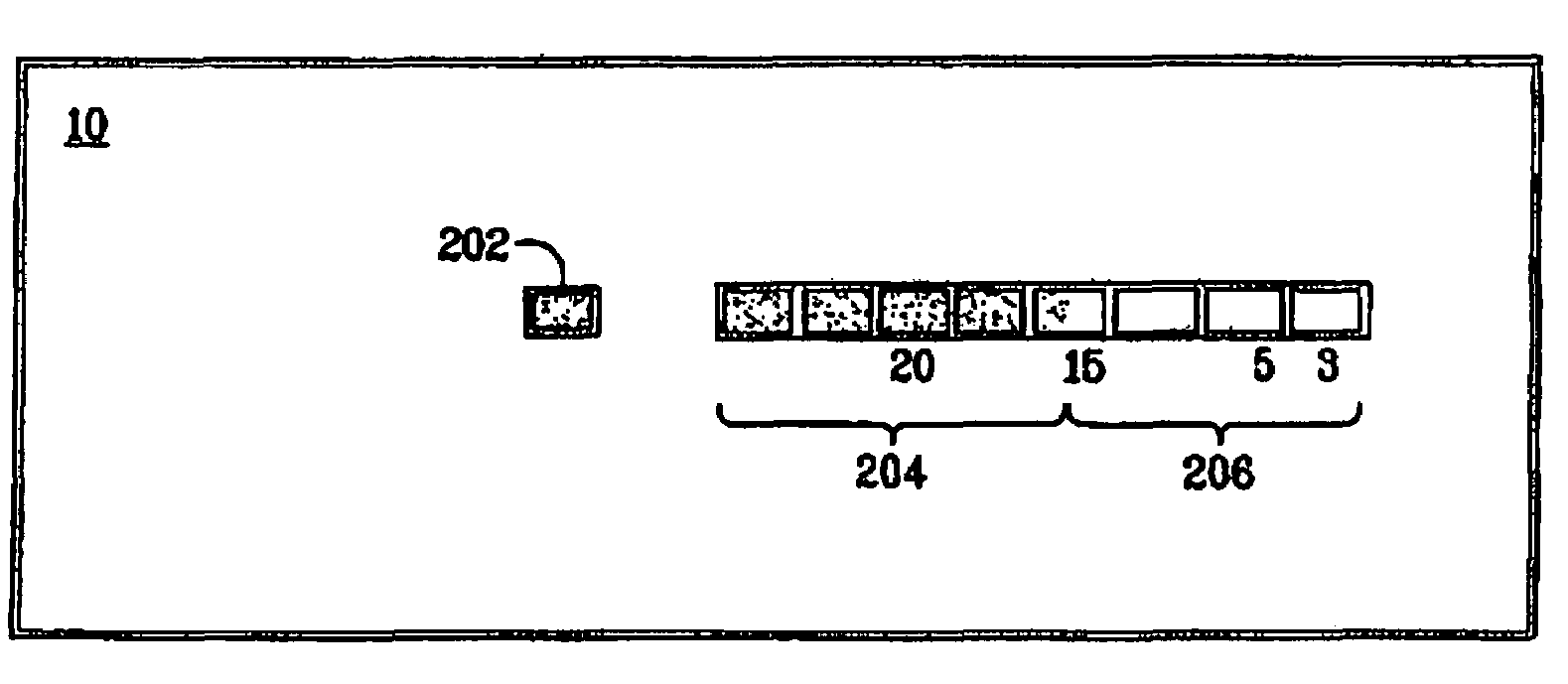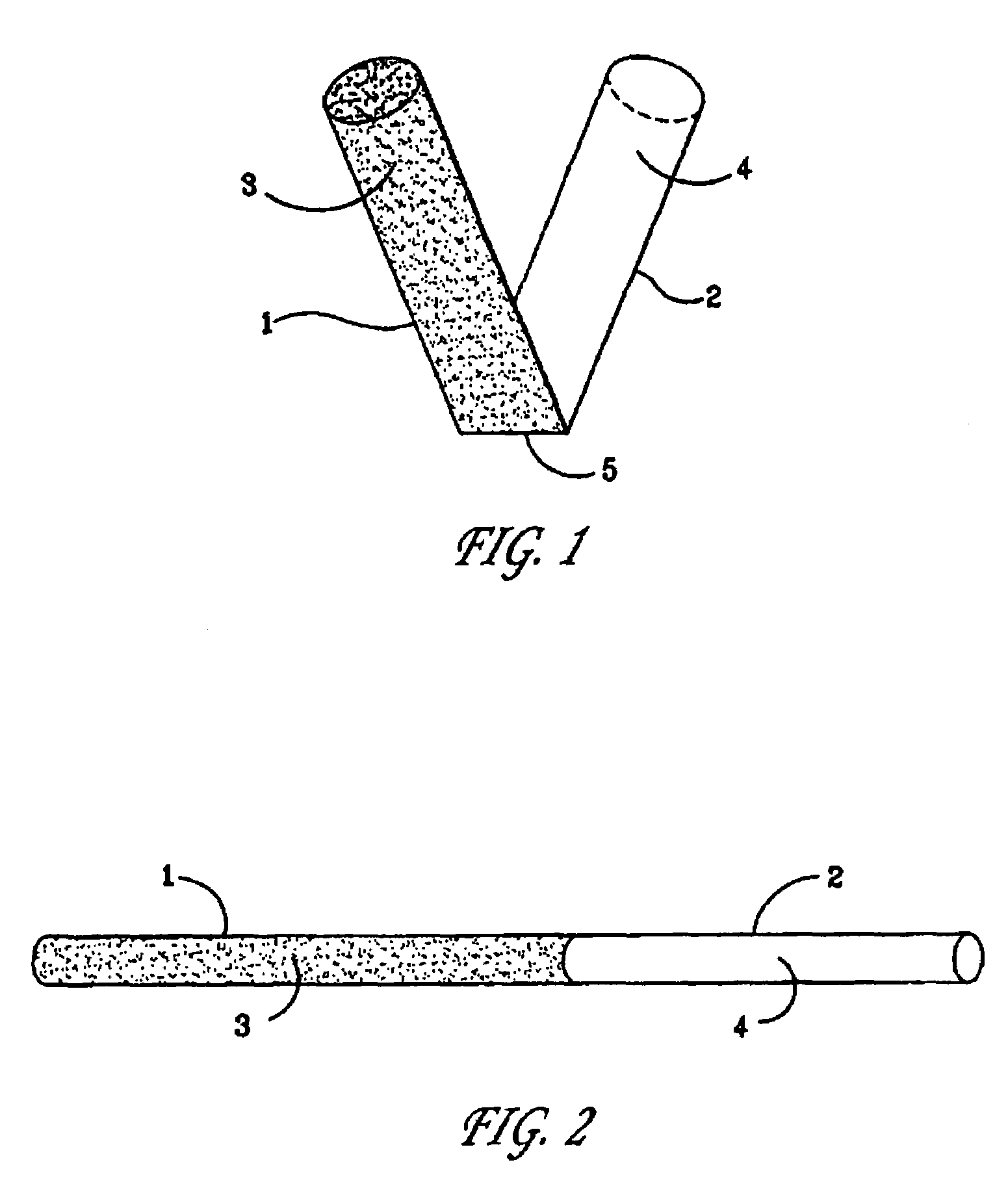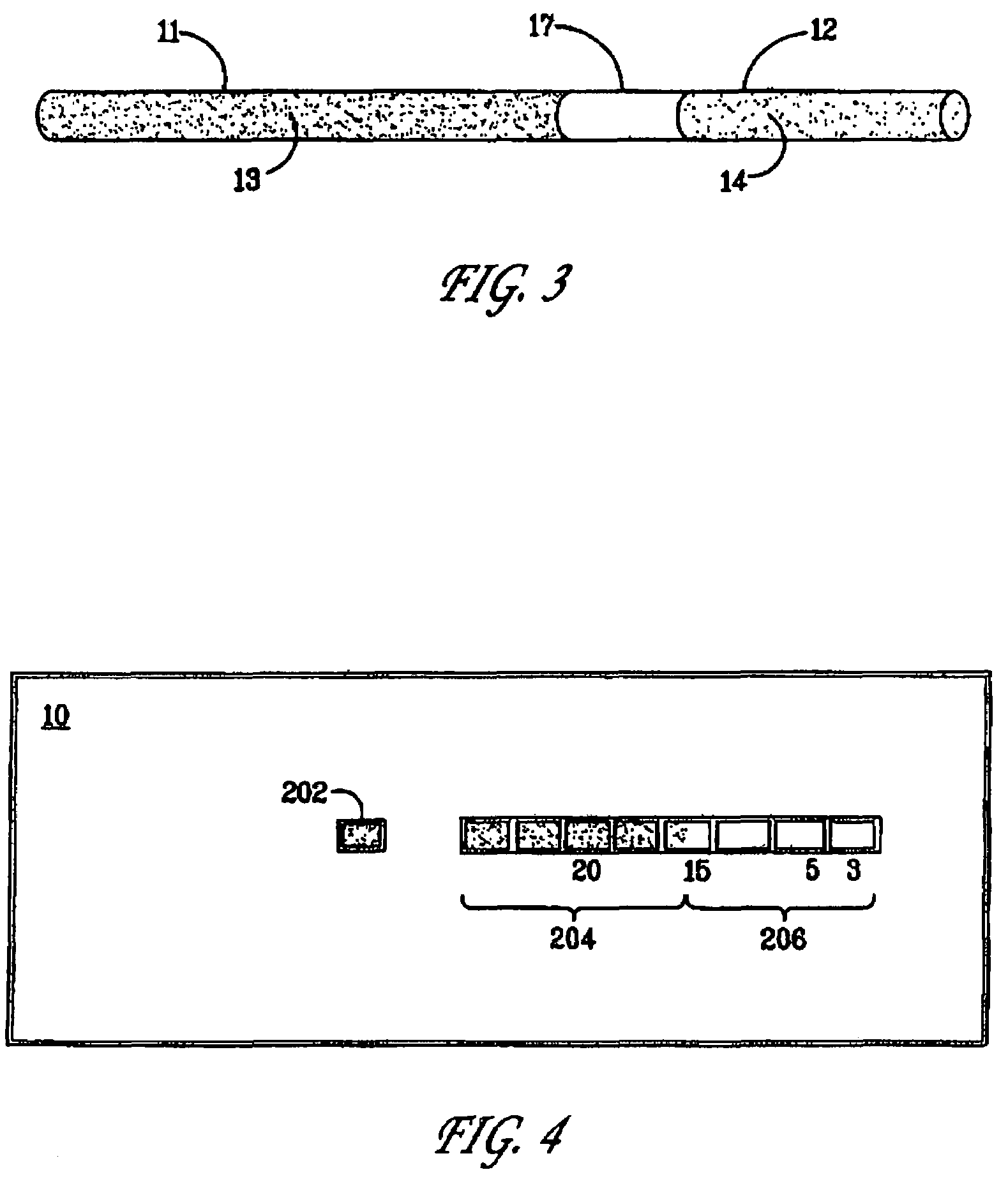Full history time-temperature indicator system
a technology of indicator system and full history, applied in the direction of time interval measurement without driving mechanism, time interval measurement, chemical analysis using precipitation, etc., can solve the problem of deterioration process faster, deterioration of perishable goods at high temperatures, and danger of propagation of microorganisms injurious to human health or spoilage of organisms
- Summary
- Abstract
- Description
- Claims
- Application Information
AI Technical Summary
Benefits of technology
Problems solved by technology
Method used
Image
Examples
example 1
Preparation of the Mobile and the Immbolized Reactant
[0045]The mobile reactant is a 0.1M solution of K4Fe(CN)6 in a mixture of 0.64% (w / w) alginate, 47.29% (w / w) glycerol, 52.06% (w / w) water.
[0046]The immobilized reactant is prepared by slowly adding a 0.1 M FeCl3 solution in a mixture of 47% (w / w) glycerol and 53% (w / w) water to a mixture of 0.64% (w / w) alginate, 47.29% glycerol and 52.06% (w / w) water. The amount of 0.1 M FeCl3 solution is 17% (w / w) of final weight. The mixing is done at room temperature by stirring vigorously. By this method a viscous liquid is achieved wherein small gel lumps containing immobilized Fe3+ are equally dispersed.
example 2
Time-temperature Indicator Prepared as an Ampoule
[0047]For preparing a time-temperature indicator as an ampoule, two transparent cylinders made of polystyrene, each of them closed in one or the ends were applied. One of the cylinders (No. 1) was able to fit into the other cylinder (No. 2) by having an outer diameter which was equal to the inner diameter of cylinder No. 2.
[0048]The mobile reactant was prepared as described in Example 1 and contained K4Fe(CN)6 at a concentration of 0.1 M. The mobile reactant was transferred to cylinder No. 1.
[0049]The immobilized reactant containing Fe3+ ions immobilized in the alginate gel was prepared as described in Example 1 and subsequently transferred to cylinder No. 2.
[0050]The two cylinders were assembled by gently pressing them together, carefully avoiding formation of air bubbles in the cylinders, and by this the chemical reaction was started.
[0051]The time-temperature indicator was incubated and regularly inspected for coloration of the gel...
example 3
Colour Development as Function of Time at 4° C. in a Strip Shaped Time-temperature Indicator
[0052]A time-temperature indicator was prepared as a strip wherein the reactants were prepared as described in the above example 1.
[0053]The colour development in the part of the strip-shaped time-temperature indicator containing the immobilized Fe3+ was monitored. The colour development was measured in percentages as the length of the strongly blue coloured zone compared to the total length of the part of the time-temperature indicator containing the immobilized reactant. The time-temperature indicator was kept at a constant temperature of 4° C. for 76 days.
[0054]The results of the above experiment is presented in the below Table 3.1.
[0055]
TABLE 3.1DaysColour development (%)001950387557887693
[0056]It is apparent from the above results that the time-temperature indicator responds well to the exposure of time at a constant temperature.
PUM
| Property | Measurement | Unit |
|---|---|---|
| temperature | aaaaa | aaaaa |
| temperature | aaaaa | aaaaa |
| temperature | aaaaa | aaaaa |
Abstract
Description
Claims
Application Information
 Login to View More
Login to View More - R&D
- Intellectual Property
- Life Sciences
- Materials
- Tech Scout
- Unparalleled Data Quality
- Higher Quality Content
- 60% Fewer Hallucinations
Browse by: Latest US Patents, China's latest patents, Technical Efficacy Thesaurus, Application Domain, Technology Topic, Popular Technical Reports.
© 2025 PatSnap. All rights reserved.Legal|Privacy policy|Modern Slavery Act Transparency Statement|Sitemap|About US| Contact US: help@patsnap.com



